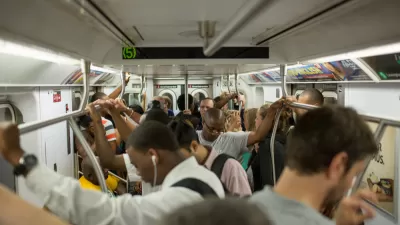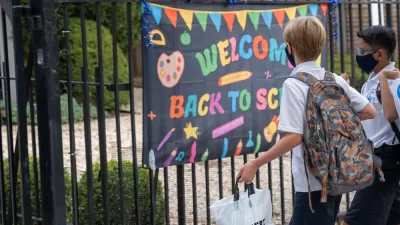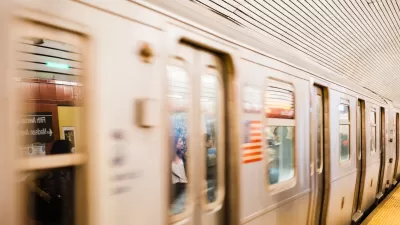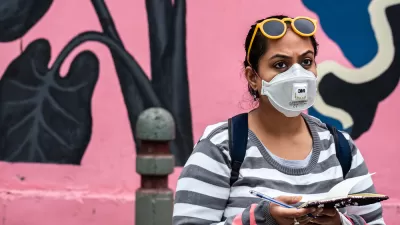Detailed animations of ventilation systems in New York City subway cars provide transit riders with a better understanding of the possibility of community spread in subway cars.

Former public transit riders wary of returning to New York subways might cite uncertainty about safety conditions and community spread as a reason for avoiding the popular form of transportation. Doing their part to arm the public with information, Mika Gröndahl, Christina Goldbaum, and Jeremy White published a New York Times article complete with in-depth information about the possibility of spread on New York City subways complete with helpful animations. Now subway riders can understand the risks, safety measures, and interventions for preventing community spread when riding the subway.
"Many New Yorkers are avoiding the subway, fearful of jostling with strangers in crowded cars. Masks and social distancing are essential, but good air flow is also key to reducing the risk of exposure to the coronavirus," write Gröndahl, Goldbaum, and White.
In one animation, a side-by-side comparison simulates the spread of droplets from someone sneezing with and without a mask, showing the efficacy of mask wearing in public spaces for reducing viral spread. "Public health experts say that the high air exchange rate and widespread mask usage on the city’s subways sharply reduces the chances of a so-called superspreader event on trains," say Gröndahl, Goldbaum, and White.
The team notes that only 2% of the 5.5 million weekday New York City subway riders currently occupy trains. Public health experts say that if pre-pandemic occupancy levels were suddenly reached, even with masks, the efficacy of the ventilation system would be greatly reduced.
FULL STORY: What Happens to Viral Particles on the Subway

Planetizen Federal Action Tracker
A weekly monitor of how Trump’s orders and actions are impacting planners and planning in America.

Congressman Proposes Bill to Rename DC Metro “Trump Train”
The Make Autorail Great Again Act would withhold federal funding to the system until the Washington Metropolitan Area Transit Authority (WMATA), rebrands as the Washington Metropolitan Authority for Greater Access (WMAGA).

The Simple Legislative Tool Transforming Vacant Downtowns
In California, Michigan and Georgia, an easy win is bringing dollars — and delight — back to city centers.

The States Losing Rural Delivery Rooms at an Alarming Pace
In some states, as few as 9% of rural hospitals still deliver babies. As a result, rising pre-term births, no adequate pre-term care and "harrowing" close calls are a growing reality.

The Small South Asian Republic Going all in on EVs
Thanks to one simple policy change less than five years ago, 65% of new cars in this Himalayan country are now electric.

DC Backpedals on Bike Lane Protection, Swaps Barriers for Paint
Citing aesthetic concerns, the city is removing the concrete barriers and flexposts that once separated Arizona Avenue cyclists from motor vehicles.
Urban Design for Planners 1: Software Tools
This six-course series explores essential urban design concepts using open source software and equips planners with the tools they need to participate fully in the urban design process.
Planning for Universal Design
Learn the tools for implementing Universal Design in planning regulations.
Smith Gee Studio
City of Charlotte
City of Camden Redevelopment Agency
City of Astoria
Transportation Research & Education Center (TREC) at Portland State University
US High Speed Rail Association
City of Camden Redevelopment Agency
Municipality of Princeton (NJ)





























